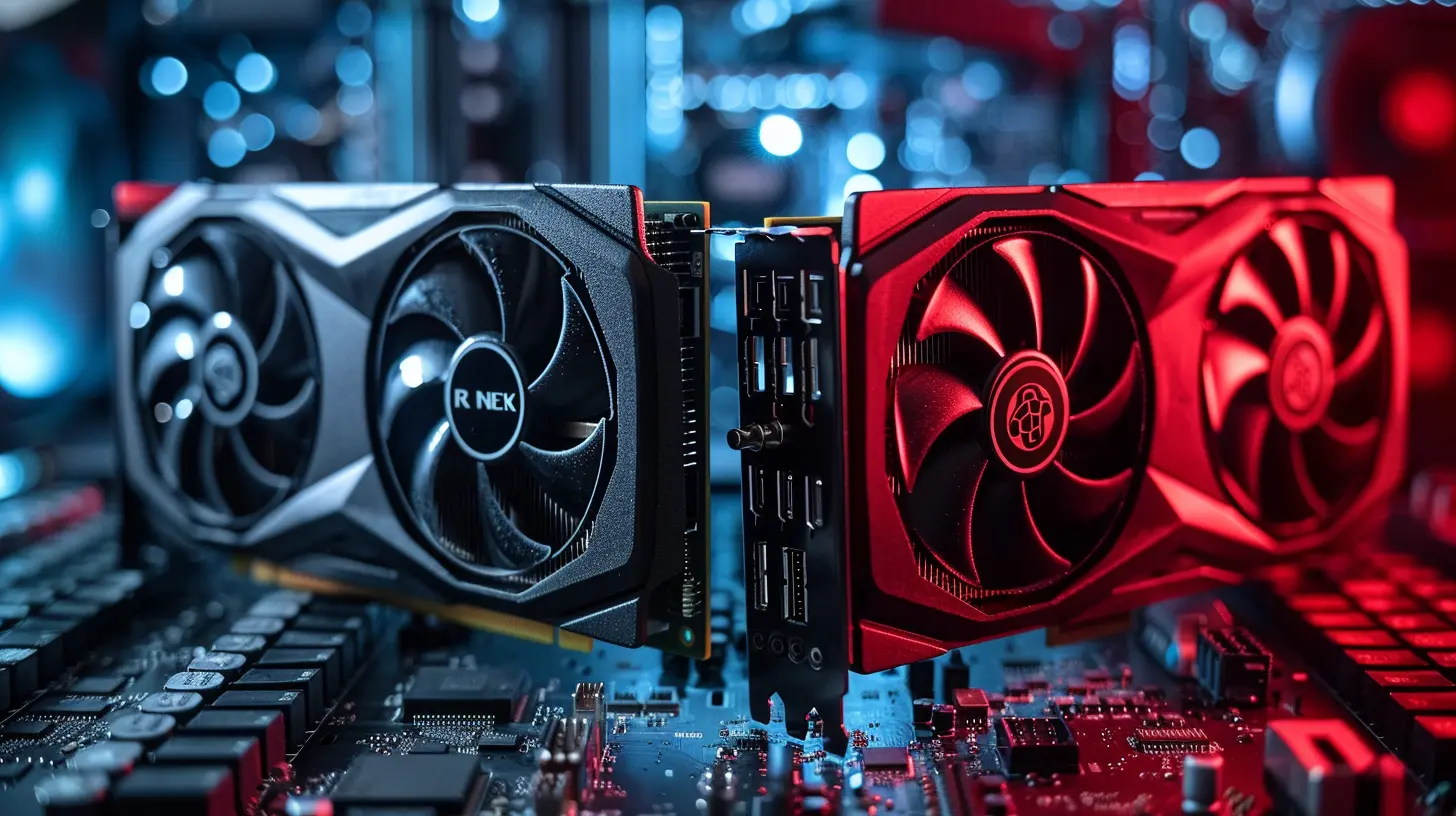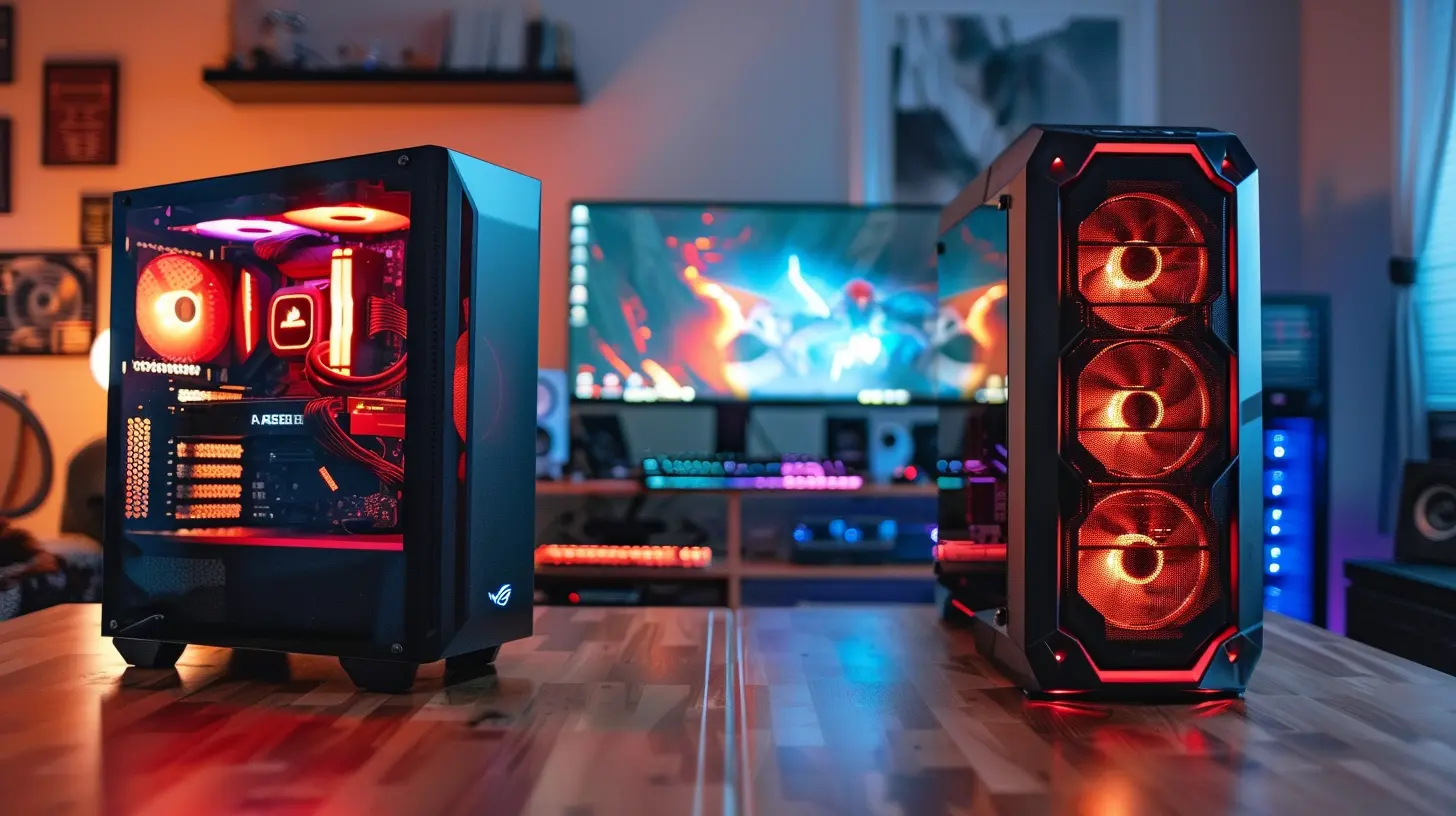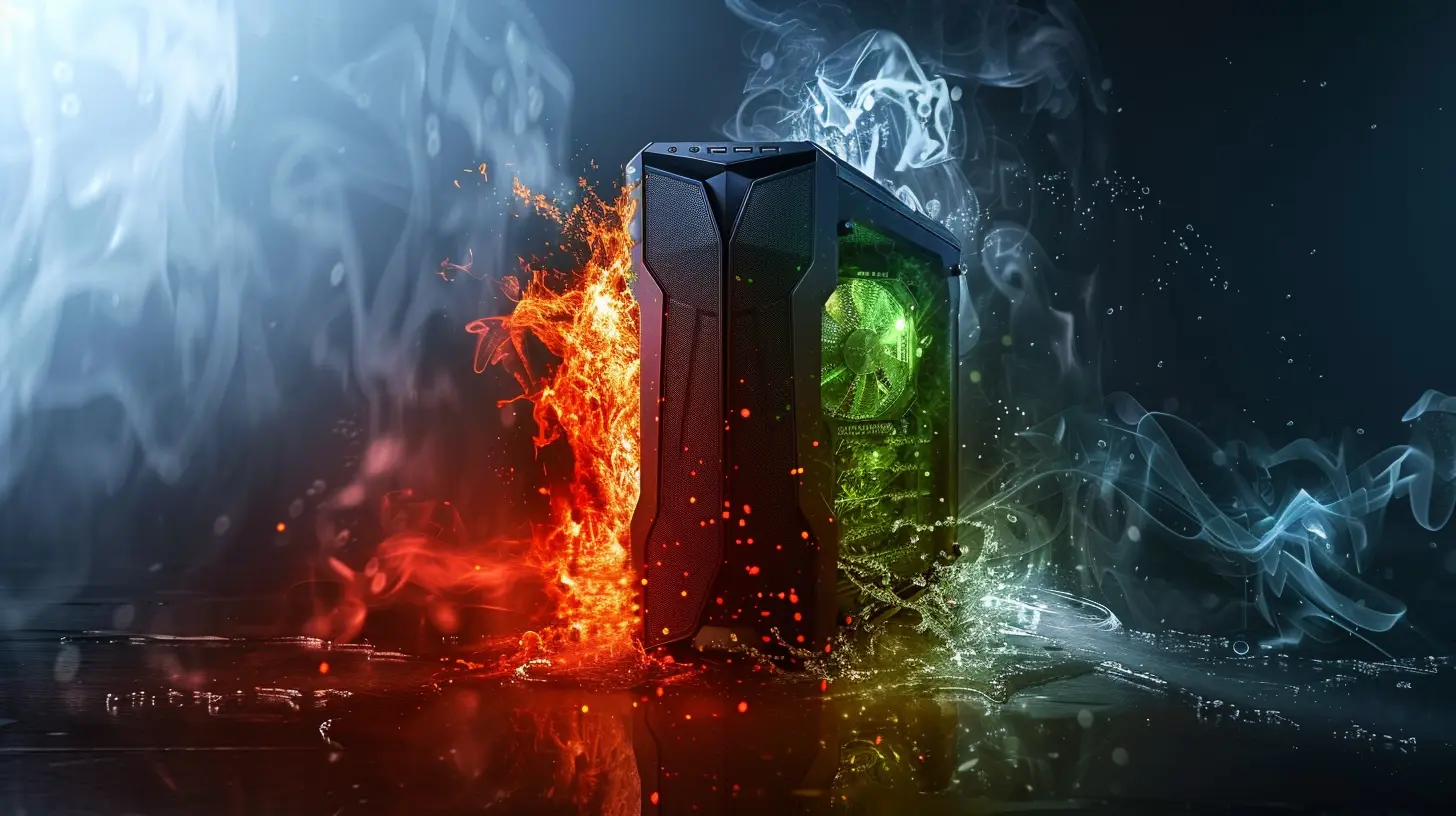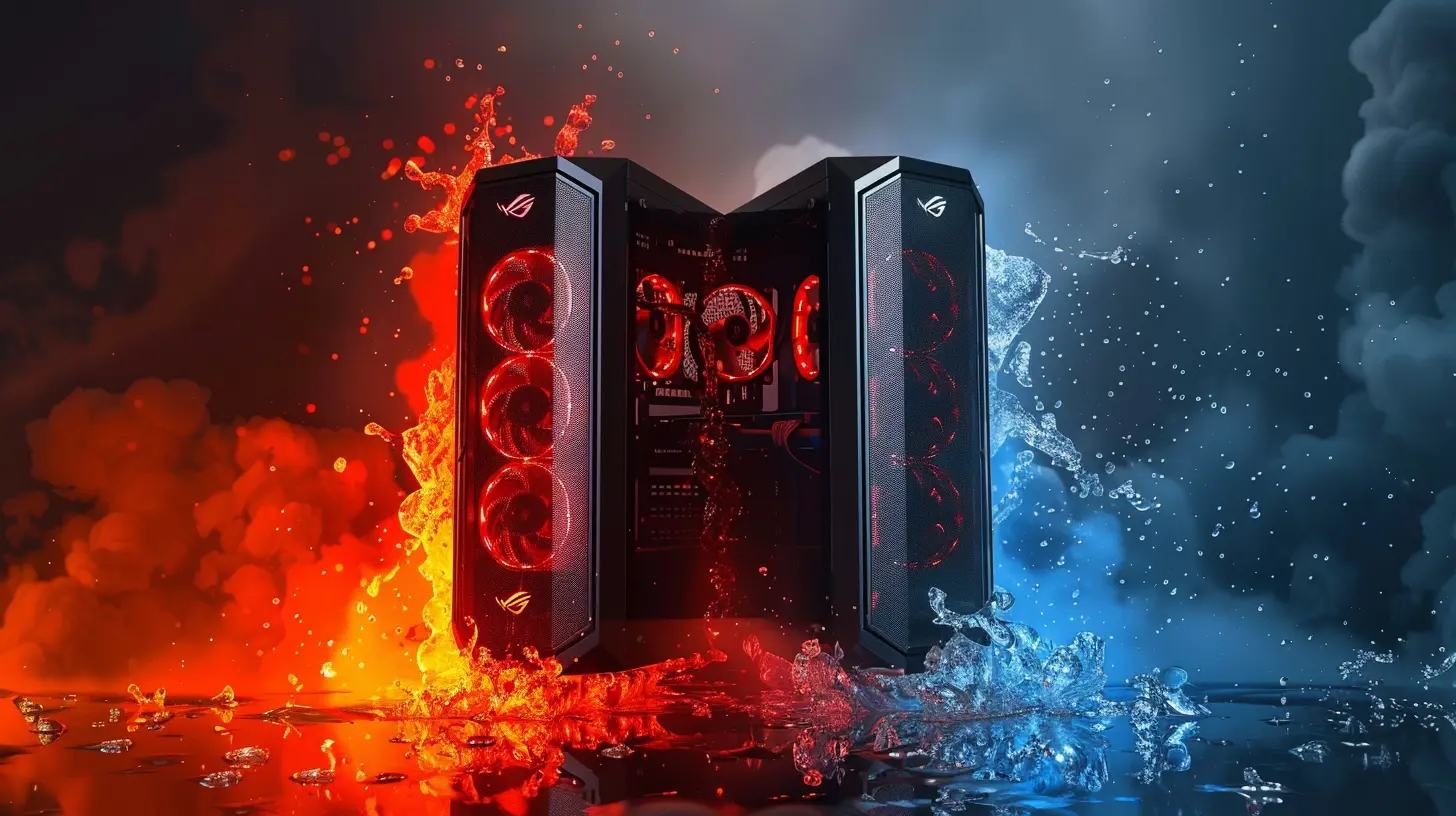Debating Between Air and Liquid Cooling: Which One's Best for Gamers?
30 June 2025
When you’re building or upgrading a gaming PC, cooling might not be the first thing you get excited about. But trust me, it should be. Whether you're overclocking your CPU to get that extra frame boost or just making sure your rig doesn’t sound like a jet engine mid-match, picking the right cooling system is a big deal.
So, let’s settle the score—air cooling vs. liquid cooling. Which one is actually better for gamers? Spoiler alert: there's no one-size-fits-all answer. But don’t worry, by the end of this, you'll know exactly which one's best for your setup, your budget, and most importantly, your gaming style.
Why Cooling Even Matters in Gaming
Before we dive in, let's clear up why cooling is important in the first place. Gaming stresses your components—especially the CPU and GPU. All that processing power generates a ton of heat. If your system isn’t dissipating it properly, you're basically cooking your expensive hardware.Overheating can lead to thermal throttling (aka your PC slows down to cool itself), random shutdowns, or even long-term damage. Now, no one wants their FPS to nosedive mid-battle because things got too hot.
So yeah, cooling is kind of a big deal.
What Is Air Cooling?
Air cooling is the traditional method. It works with fans and heatsinks. The fan pulls cool air in, and the heatsink absorbs and dissipates the heat away from your CPU or GPU. It’s simple, effective, and usually cheaper.Pros of Air Cooling
- Budget-Friendly: You don’t have to break the bank.- Simplicity Rules: Installation is usually plug-and-play.
- Low Maintenance: Unless your fan dies or clogs with dust, it's smooth sailing.
- Reliable: Fewer moving parts = less chance of failure.
Cons of Air Cooling
- Bulkiness: Some high-performance air coolers are massive.- Noise Factor: More fans = more noise, especially under load.
- Heat Dispersal: The heat gets dumped inside your case, which can affect other components.
Air cooling is kind of like putting a fan in a room—it helps, but it’s not going to perform miracles in a heatwave.
What Is Liquid Cooling?
Liquid cooling, on the other hand, pumps coolant through tubes and a radiator system to pull heat away from your CPU (and sometimes GPU too). It’s like having an AC unit rather than a fan.Pros of Liquid Cooling
- Superior Cooling Performance: Especially with overclocked systems.- Sleek Aesthetics: RGB lights, custom loops—it’s basically PC art.
- Less Noise: High-end systems can run whisper-quiet.
- Better Heat Management: Pushes most of the heat directly out through the radiator.
Cons of Liquid Cooling
- Pricey: You’ll definitely pay a premium.- Complexity: Installation can be tricky, especially for custom loops.
- Risk of Leaks: Rare, but yep, it happens.
- Maintenance Required: Custom loops need regular upkeep.
Liquid cooling’s like having a mini water park in your PC—flashy, efficient, but way more effort.
Performance Showdown: Air vs. Liquid
Now let’s talk numbers—because at the end of the day, performance is king. How do these two square up?Temperature Control
Liquid cooling usually wins here, especially under sustained loads. If you’re pushing your CPU past 4.5GHz or streaming while gaming, the liquid cooler keeps temps well within safe limits.However, top-tier air coolers aren’t slouches either. Models like the Noctua NH-D15 offer impressive cooling that rivals some AIO (All-in-One) liquid coolers.
Verdict: Liquid cooling leads the race, but air puts up a good fight if you go high-end.
Noise Level
Liquid cooling setups, especially those with larger radiators, can operate more silently. Air coolers vary—a mid-range fan might hum along just fine, but under stress, noise becomes noticeable.Verdict: Liquid cooling is generally quieter, but air cooling has improved dramatically in recent years.
Longevity & Maintenance
Air coolers can easily last 5+ years with minimal attention. Just dust them off occasionally. Liquid setups, especially custom loops, demand more care—checking fluid levels, cleaning tubes, etc.AIO liquid coolers sit in the middle—less maintenance than custom loops but more than air.
Verdict: Air cooling wins here in terms of ease and peace of mind.
Best Use Cases for Gamers
What kind of gamer are you? Your playstyle and setup heavily influence the best cooling option.Casual and Budget Gamers
If you play on a 1080p monitor, mostly stick to AAA titles on medium settings, and don’t tinker much—air cooling is your best friend. It’s affordable, quiet, and gets the job done without complications.Competitive and Hardcore Gamers
Running ultra-high settings? Streaming and recording gameplay? Maybe even dabbling in heavy mods or emulation? Liquid cooling gives you the thermal headroom to perform at your peak without thermal throttling kicking in.Overclockers and PC Enthusiasts
This is where liquid cooling really shines. If you’re squeezing every ounce of performance out of your CPU or GPU, custom or even high-end AIO liquid cooling is a no-brainer.Small Form Factor (SFF) Builds
Space matters here. Air coolers can be bulky, making them tricky for compact builds. Liquid cooling with a slim radiator offers more flexibility and better airflow management.AIO vs. Custom Loop: What’s the Difference?
Not all liquid cooling is created equal.AIO (All-in-One) Coolers
- Pre-sealed systems- Easier to install
- Moderate price
- Less maintenance
Perfect for gamers who want liquid cooling benefits without the engineering degree.
Custom Loops
- Fully customizable (CPU, GPU, RAM etc.)- Involves tubing, reservoirs, and coolant
- Expensive and complex
- Ultimate performance and aesthetics
If your PC is your pride and joy and you enjoy building and maintaining it, custom loops are the Ferrari of cooling solutions.
Factors to Consider Before Choosing
So, how do you decide what’s right for you? Here's a checklist:1. Budget: Air cooling wins if money’s tight.
2. Performance Needs: Liquid cooling if you're running hot.
3. Noise Tolerance: Hate fan noise? Go liquid.
4. Case Size: Make sure your choice fits your case!
5. Aesthetic Goals: RGB heaven? Liquid’s your guy.
6. Upgrade Plans: Future-proofing might justify the extra cost of liquid.
7. Comfort Level: Don’t get what you can’t install or maintain confidently.
Dispelling Common Myths
Let’s bust a few myths that still float around cooling.- Myth: Liquid coolers will always leak.
Truth: Modern AIOs are sealed and leak-resistant. Custom loops? Different story.
- Myth: Air coolers are outdated.
Truth: Not even close. Many still match or beat entry-level liquid coolers.
- Myth: Liquid coolers are overkill for gaming.
Truth: Depends on your rig. For many, they strike the perfect performance-to-noise ratio.
- Myth: Bigger is always better.
Truth: Not always. A well-optimized mid-tier cooler can outperform a poorly installed high-end one.
Final Verdict: So, Which One’s Best for Gamers?
Alright, time for the million-dollar question. Air or liquid?Here’s the deal—both have their place. If you're building a budget-friendly rig, aren't going too wild with settings, and prefer simplicity, air cooling is solid. It’s dependable, performs well, and doesn’t require much TLC.
But if you’re chasing high-performance gaming, streaming, and heavy multitasking, liquid cooling is where things get serious. It’s cooler, quieter, and just looks plain awesome.
Still undecided? Think of it like this:
- Air cooling is like driving a reliable Honda.
- Liquid cooling is the high-performance Tesla—you’ll spend more, but the performance is unmatched.
The choice? Totally depends on you.
all images in this post were generated using AI tools
Category:
Hardware ReviewsAuthor:

Leif Coleman
Discussion
rate this article
2 comments
Signe McNeil
Absolutely loving this discussion! Both air and liquid cooling have their perks, but it ultimately comes down to personal preference. Can’t wait to see what fellow gamers choose—let the cooling debate begin! Happy gaming, everyone! 🎮✨
November 5, 2025 at 3:57 PM

Leif Coleman
Thank you! It’s great to see so much enthusiasm for the cooling debate. Happy gaming! 🎮✨
Ronan Gates
Choosing between air and liquid cooling? It's like deciding between pizza or tacos—both satisfy, but one might make you feel a bit cooler in the heat of battle!
July 11, 2025 at 5:12 PM

Leif Coleman
Great analogy! Both cooling methods have their strengths—air cooling is reliable and easy to maintain, while liquid cooling offers superior performance and aesthetics. It ultimately depends on your gaming needs and preferences!


